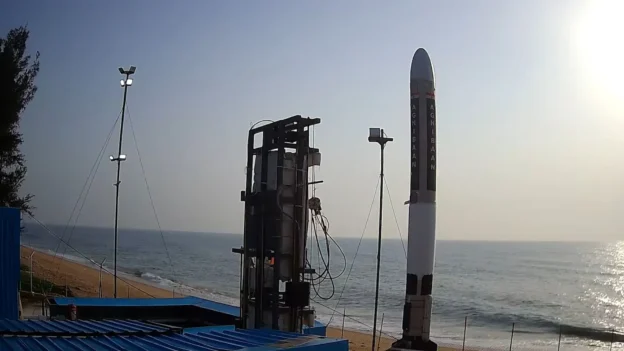The recent launch of the Agnikul mission was a historic event for India and the world. It was the first launch from a private facility in the country and the first with a 3D printed semi-cryogenic engine, being manufactured in one piece.
The 3D printed engine of Agnikul Cosmos
Agnikul Cosmos, a Chennai-based startup, managed to perform a successful suborbital successful suborbital launch of its 3D printed semi-cryogenic rocket, called Agnibaan, on May 30. The launch was conducted from the company’s private launch pad in Sriharikota. This engine was manufactured using an advanced 3D metal printer in a record time of just 72 hours, demonstrating the potential of additive manufacturing to enable on-demand launches for small satellite operators.
In contrast, Agnikul 3D printed the engine in a high-performance nickel-chromium alloy in just three days, using a printer from the German company EOS. The construction of the complete rocket, including the 3D printed engine 3D printed engine took a few additional weeks, a much faster process compared to other similar projects, which can take 12 to 16 weeks.

The launch of the Agnibaan rocket. Source: Agnikul Cosmos
Agnikul’s approach is different compared to other companies such as Relativity and Rocket Lab, which use 3D printing. However, Agnikul has succeeded in printing the entire engine as a single component, rather than assembling multiple printed parts. This simplified methodology and rapid production could facilitate more affordable and agile launch services.
Follow us on social networks and don’t miss any of our publications!
YouTube LinkedIn Facebook Instagram X
Source and photo: Techspot

